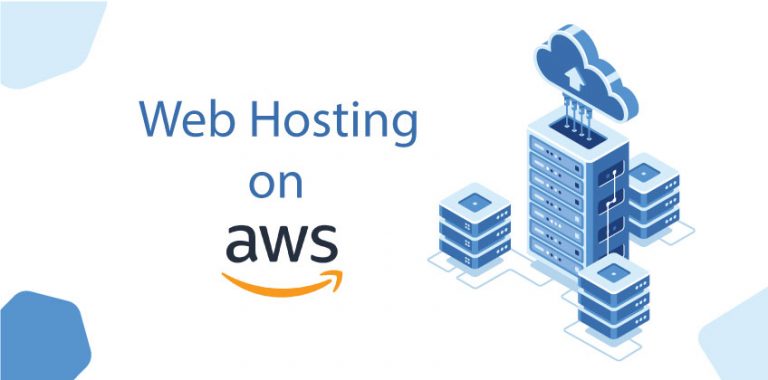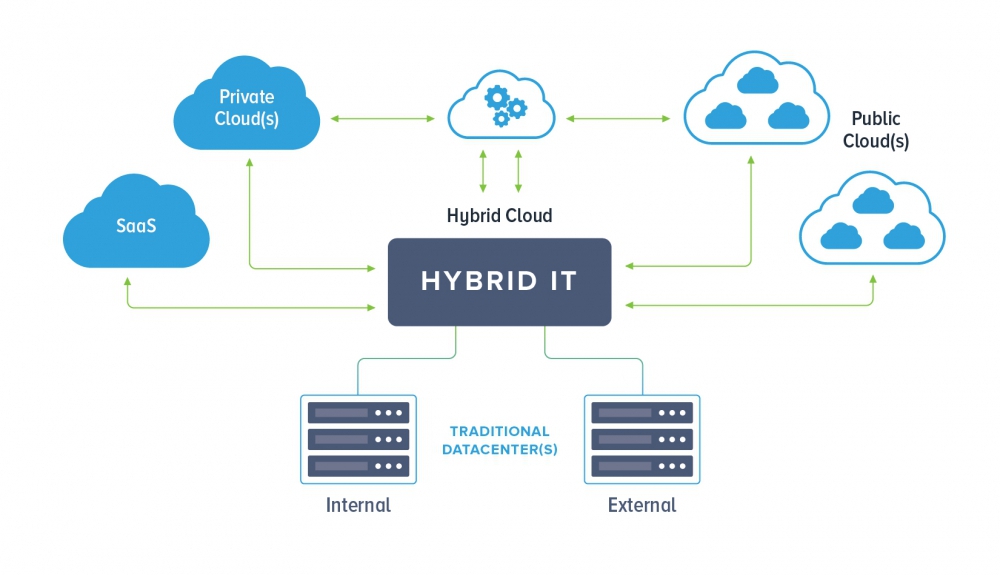
Good news We now offer hybrid hosting solutions
Good news we now offer hybrid hosting solutions – Good news: we now offer hybrid hosting solutions! For those of you juggling the complexities of managing your online presence, this is a game-changer. Imagine the power of combining the best aspects of cloud and on-premise hosting – the flexibility, scalability, and security you need, all in one package. We’re thrilled to finally offer this option, and I’m excited to share all the details with you.
Hybrid hosting bridges the gap between traditional hosting and the cloud, offering a customizable solution that adapts to your specific needs. Whether you’re a small business owner just starting out or a large enterprise with complex infrastructure, hybrid hosting provides a level of control and flexibility that’s unmatched. This means better performance, increased security, and ultimately, peace of mind knowing your website and data are safe and readily accessible.
Understanding Hybrid Hosting
So, you’ve heard about hybrid hosting, but aren’t quite sure what it’s all about? Let’s dive in and explore this increasingly popular solution for businesses of all sizes. It offers a compelling blend of the best features from different hosting approaches, creating a tailored solution that addresses specific needs and scales with growth.Hybrid hosting combines elements of different hosting types, such as cloud hosting and on-premise hosting, to create a flexible and robust infrastructure.
This approach avoids the limitations of relying solely on one type of hosting, allowing for a more customized and efficient solution. Unlike traditional hosting methods that are often rigid and inflexible, hybrid hosting offers a dynamic and adaptable approach.
Benefits of Hybrid Hosting Compared to Traditional Methods
Traditional hosting, whether it’s solely on-premise or entirely cloud-based, can present significant limitations. On-premise solutions often lack scalability and flexibility, requiring significant upfront investment and ongoing maintenance. Cloud-only solutions, while scalable, can sometimes present security concerns or high latency depending on location and data transfer needs. Hybrid hosting bridges this gap, providing the best of both worlds. It offers increased scalability, enhanced security through a combination of on-premise control and cloud flexibility, and improved cost-effectiveness by optimizing resource allocation.
For example, a company might store sensitive data on-premise for tighter security, while leveraging the cloud for less critical applications that benefit from scalability.
Types of Hybrid Hosting Configurations
Several hybrid hosting configurations exist, each tailored to specific needs. A common approach involves using a private cloud for sensitive data and applications, complemented by a public cloud for less critical workloads. Another configuration might utilize a combination of on-premise servers for core applications and cloud-based services for backup and disaster recovery. The specific configuration depends on factors such as security requirements, application needs, budget, and desired level of control.
For instance, a financial institution might favor a heavily weighted on-premise setup for sensitive transaction data, while utilizing cloud services for non-critical tasks such as email and collaboration tools. A smaller e-commerce business, however, might find a more balanced approach, using the cloud for peak demand handling and on-premise for core operational functions, more cost-effective.
Scalability and Flexibility of Hybrid Hosting
The scalability and flexibility of hybrid hosting are significant advantages over traditional methods. Businesses can easily scale resources up or down based on demand, avoiding overspending on unused capacity. This dynamic allocation of resources ensures optimal performance and cost efficiency. Moreover, hybrid hosting offers greater flexibility in adapting to changing business needs. As the business grows and its requirements evolve, the hybrid infrastructure can be easily adjusted to accommodate new applications, increased traffic, or enhanced security needs.
This contrasts sharply with traditional methods, which often require significant time and resources to adapt to changes.
Businesses Benefiting Most from Hybrid Hosting
Several business types can particularly benefit from hybrid hosting. Companies with a mix of critical and non-critical applications find this solution ideal. For example, healthcare providers can store sensitive patient data on-premise while using the cloud for less sensitive applications like telehealth platforms. Similarly, financial institutions can benefit from the enhanced security and control of a hybrid approach, managing sensitive financial data on-premise and leveraging cloud services for scalability and other non-critical operations.
Retailers can also benefit from hybrid hosting, managing critical transaction data on-premise while utilizing the cloud for things like inventory management and customer relationship management (CRM) systems that benefit from scalability.
Great news, everyone! We now offer hybrid hosting solutions, perfect for those needing the flexibility and power to handle demanding workloads. If you’re looking to boost your video presence, check out our guide on getting it on with youtube to learn how to optimize your channel. With our robust hybrid hosting, you’ll have the resources to manage even the most successful YouTube channels!
Comparison of Hybrid Hosting Models, Good news we now offer hybrid hosting solutions
| Hosting Model | Scalability | Security | Cost |
|---|---|---|---|
| Private Cloud + Public Cloud | High | Medium-High (depends on cloud provider security) | Medium-High |
| On-Premise + Public Cloud Backup | Medium | High (strong on-premise control) | Medium |
| On-Premise + Cloud Services (e.g., SaaS) | Low-Medium | High (for on-premise components) | Low-Medium |
Target Audience for Hybrid Hosting: Good News We Now Offer Hybrid Hosting Solutions
Hybrid hosting, blending the best of cloud and on-premise solutions, isn’t a one-size-fits-all solution. Understanding who benefits most is key to successful marketing and deployment. This ideal customer profile isn’t just about technical needs; it’s about aligning with businesses experiencing specific growth challenges and strategic priorities.The ideal customer for hybrid hosting is a company experiencing rapid growth or significant digital transformation, requiring a flexible and scalable IT infrastructure.
They often juggle legacy systems with the need for modern, agile cloud services. This tension between established infrastructure and the demands of a dynamic business environment is the core pain point hybrid hosting elegantly addresses.
Ideal Customer Profile: The Growing Enterprise
Our ideal customer is a mid-sized enterprise (SME) with 50-500 employees, operating in a competitive industry. They likely have a significant investment in existing on-premise infrastructure, perhaps including legacy applications and databases crucial to their business operations. However, they also need to scale quickly to meet increasing demands, leverage cloud-based services for agility and cost-effectiveness, and improve data security and disaster recovery capabilities.
This customer often struggles with the complexity and expense of fully migrating to the cloud, or the limitations and scalability issues of remaining solely on-premise. They value reliability, security, and control, but also recognize the benefits of cloud-based scalability and cost efficiency. Think of a manufacturing company expanding into new markets, needing to rapidly process larger datasets while maintaining secure control over sensitive production data.
Or a financial services firm requiring high availability and stringent regulatory compliance while embracing new cloud-based analytics tools.
Needs and Pain Points Addressed by Hybrid Hosting
- Scalability and Flexibility: Hybrid hosting allows businesses to scale resources up or down as needed, easily adapting to fluctuating workloads and seasonal demands. This avoids the overspending associated with always-on cloud resources and the limitations of fixed on-premise capacity.
- Cost Optimization: By strategically migrating less critical workloads to the cloud, companies can reduce their overall IT infrastructure costs while maintaining control over sensitive or legacy systems on-premise.
- Data Security and Compliance: Hybrid hosting allows businesses to maintain stricter control over sensitive data by keeping it on-premise while leveraging the security features of the cloud for less critical data.
- Disaster Recovery and Business Continuity: Hybrid environments can offer robust disaster recovery strategies, with data replicated across on-premise and cloud locations for increased resilience.
- Legacy System Integration: Hybrid hosting enables businesses to seamlessly integrate modern cloud services with existing legacy systems, avoiding costly and disruptive full-scale migrations.
Marketing Persona: “Sarah, the Agile CIO”
Sarah is a 45-year-old CIO of a mid-sized manufacturing company. She’s responsible for managing a complex IT infrastructure, including legacy systems and a growing need for cloud-based solutions. She’s highly results-oriented, focused on optimizing IT costs while ensuring business continuity and regulatory compliance. She’s tech-savvy but appreciates solutions that are easy to manage and integrate with existing systems.
Her company is experiencing rapid growth and needs a flexible, scalable solution to support its expansion.
Marketing Channels
Reaching Sarah and similar customers requires a multi-channel approach:
- Targeted Online Advertising: Utilizing LinkedIn and industry-specific publications to reach CIOs and IT managers.
- Content Marketing: Creating informative blog posts, white papers, and case studies demonstrating the benefits of hybrid hosting for similar businesses.
- Webinars and Online Events: Hosting webinars and online events focused on the challenges and solutions for managing hybrid IT environments.
- Industry Conferences and Trade Shows: Participating in relevant industry events to network with potential customers and showcase our hybrid hosting solutions.
- Direct Sales and Partnerships: Developing strong relationships with channel partners and engaging in direct sales outreach to target companies.
Technical Aspects of Hybrid Hosting

Source: i2k2.com
So, you’re intrigued by hybrid hosting – fantastic! But let’s get down to the nitty-gritty: the technical nuts and bolts that make this powerful solution tick. Understanding the infrastructure, security, migration processes, and performance management is key to successfully leveraging the benefits of a hybrid environment.
Infrastructure Components
A hybrid hosting setup typically involves a blend of on-premises infrastructure (your own servers and data centers) and cloud-based resources (like AWS, Azure, or Google Cloud). On-premises infrastructure might include physical servers, storage arrays, and network equipment, all managed internally. The cloud component provides scalability, flexibility, and access to a wide range of services, from compute and storage to databases and security tools.
The connection between these two environments is crucial, often facilitated by secure VPN connections or dedicated leased lines. The specific mix of on-premises and cloud resources will depend entirely on your individual needs and existing infrastructure. For example, a company might choose to host sensitive databases on-premises while utilizing cloud resources for less critical applications.
Security Measures
Security in a hybrid environment is paramount. It requires a multi-layered approach encompassing both on-premises and cloud security measures. This includes firewalls, intrusion detection systems (IDS), and intrusion prevention systems (IPS) deployed at various points within the network. Data encryption both in transit and at rest is crucial, especially for sensitive information. Regular security audits and penetration testing are essential to identify vulnerabilities and ensure the ongoing effectiveness of security controls.
Access control mechanisms, such as role-based access control (RBAC), are vital to restrict access to sensitive data and resources based on user roles and responsibilities. Strong authentication mechanisms, such as multi-factor authentication (MFA), should be enforced for all users.
Data and Application Migration
Migrating existing data and applications to a hybrid platform requires careful planning and execution. The process typically involves assessing the current infrastructure, identifying applications and data to be migrated, and developing a detailed migration plan. This plan should Artikel the migration strategy (e.g., phased migration, big bang migration), the tools and technologies to be used, and the timelines for each phase.
Data migration might involve using tools to replicate or transfer data from on-premises storage to cloud storage. Application migration may involve re-platforming, rehosting, or refactoring applications to be compatible with the hybrid environment. Thorough testing is crucial after migration to ensure functionality and performance. For example, a company might start by migrating a less critical application to the cloud to test the process before migrating core applications.
Performance Management and Monitoring
Effective performance management and monitoring are critical for ensuring the optimal performance of a hybrid hosting system. This requires implementing monitoring tools that can track key performance indicators (KPIs) across both on-premises and cloud environments. These KPIs might include CPU utilization, memory usage, network latency, and application response times. Monitoring tools provide real-time visibility into system performance, allowing for proactive identification and resolution of performance bottlenecks.
Automated alerts can be configured to notify administrators of potential issues, enabling timely intervention. Performance tuning and optimization may involve adjusting resource allocation, optimizing application code, or upgrading hardware or software.
Troubleshooting Common Issues
Troubleshooting in a hybrid environment requires a systematic approach. Common issues might include network connectivity problems, application performance bottlenecks, data synchronization issues, and security breaches. A structured troubleshooting process might involve checking network connectivity, reviewing application logs, analyzing system performance metrics, and investigating security logs. Collaboration between on-premises and cloud support teams is often essential to resolve complex issues.
Detailed documentation of the hybrid infrastructure, including network diagrams, application architectures, and security configurations, is crucial for effective troubleshooting. For example, a sudden increase in latency might indicate a network issue, requiring investigation of network devices and connections. A slow-performing application might require code optimization or resource allocation adjustments.
Marketing and Communication Strategies

Source: esilo.com
Getting the word out about our new hybrid hosting solutions requires a multi-pronged approach. We need to clearly communicate the value proposition to our target audience, showcasing the benefits in a way that resonates and drives conversions. This involves crafting compelling marketing messages, designing effective promotional materials, and leveraging social media to reach potential clients. We also need to address potential concerns proactively through FAQs and build trust by sharing successful case studies.Our marketing strategy will focus on highlighting the unique advantages of hybrid hosting, emphasizing its flexibility, scalability, and cost-effectiveness.
We’ll target businesses that need a solution that combines the best of both cloud and on-premise hosting, allowing them to tailor their infrastructure to their specific needs and budget.
Compelling Marketing Message
Our marketing message will center around the idea of “optimized performance and cost control.” We’ll emphasize how hybrid hosting offers the best of both worlds: the scalability and flexibility of the cloud combined with the security and control of on-premise solutions. This allows businesses to optimize their IT infrastructure for peak performance while simultaneously managing costs effectively. We will use phrases like “Maximize efficiency, minimize expenses” and “The perfect blend of power and affordability” in our promotional materials.
Promotional Materials
Our website copy will prominently feature a clear explanation of hybrid hosting, along with compelling visuals demonstrating its benefits. Imagine a website banner showcasing a split image: one side depicting a traditional server room, representing the limitations of on-premise hosting, and the other side showing a dynamic cloud interface, symbolizing the scalability of cloud hosting. The center would seamlessly blend both, illustrating the power of hybrid hosting.
Brochures will follow a similar approach, using concise bullet points to highlight key features and benefits, and including testimonials from satisfied clients.
Social Media Campaign
Our social media campaign will utilize a mix of organic and paid content. We’ll share informative posts explaining the advantages of hybrid hosting, post engaging infographics illustrating key benefits, and run targeted ads to reach specific business demographics. We can leverage platforms like LinkedIn to target IT professionals and business decision-makers. A series of short videos explaining different aspects of hybrid hosting, such as security features and scalability options, will be particularly effective.
We’ll also run contests and giveaways to increase engagement and generate leads.
Successful Case Studies
We will showcase case studies of businesses that have successfully implemented our hybrid hosting solutions. For example, a small startup might benefit from the cost-effectiveness and scalability, allowing them to rapidly expand without significant upfront investment. A larger enterprise might highlight the enhanced security and control offered by hybrid hosting, alongside the ability to seamlessly integrate existing on-premise systems with cloud-based services.
Each case study will clearly demonstrate the positive impact of hybrid hosting on the business’s bottom line and operational efficiency. These case studies will be prominently featured on our website and social media channels.
Frequently Asked Questions (FAQs)
Addressing common concerns proactively builds trust and credibility. Our FAQs section will cover topics such as:
- What are the security implications of hybrid hosting?
- How does hybrid hosting compare to purely cloud or on-premise solutions?
- What is the cost of hybrid hosting, and how is it structured?
- What level of technical expertise is required to manage a hybrid hosting environment?
- What are the scalability options available with hybrid hosting?
Each question will be answered concisely and clearly, providing potential clients with the information they need to make an informed decision.
Visual Representation of Hybrid Hosting

Source: dealerinspire.com
Understanding hybrid hosting is greatly enhanced by visual aids. Diagrams and charts can clarify the complex interplay of on-premise and cloud resources, data flow, and cost implications. Let’s explore some visual representations that bring this powerful hosting solution to life.
Diagram of Hybrid Hosting Architecture
Imagine a diagram depicting two distinct but interconnected environments. On one side, we see a traditional on-premise data center, represented by servers, storage arrays, and network equipment neatly arranged within a physical building. This represents the company’s privately owned and managed infrastructure. On the other side, we see a stylized cloud platform, represented by abstract cloud shapes connected to the internet, symbolizing the scalable and flexible resources offered by a cloud provider like AWS, Azure, or Google Cloud.
A key element is the connection between the two environments – a secure and managed link, perhaps represented by a thick, bidirectional arrow, showcasing the seamless flow of data and applications between the on-premise and cloud components. This connection could be a VPN, a dedicated leased line, or a more sophisticated network architecture depending on the specific implementation.
The diagram should also visually represent key components like firewalls, load balancers, and security gateways to highlight the security aspects of the hybrid setup. Finally, different applications or workloads could be represented as icons located within either the on-premise or cloud sections, illustrating how specific applications or services are deployed based on their needs and business requirements.
Workflow in a Typical Hybrid Hosting Environment
A workflow diagram would ideally show a user request originating from a client device (laptop, mobile phone, etc.). This request then travels through a load balancer, which intelligently directs the request to either the on-premise server or the cloud-based server based on factors like resource availability, application requirements, and pre-defined policies. If the request is handled by the on-premise server, the process is illustrated within the on-premise data center, showing the server processing the request and returning the response to the user.
If the request is routed to the cloud, the diagram should show the request traversing the secure link to the cloud, being processed by cloud resources, and then the response travelling back through the same secure link to the user. The diagram could use different colors or shading to distinguish data flows and processing stages, making it easy to follow the journey of a user request and highlight the seamless integration between on-premise and cloud resources.
Error handling and failover mechanisms could also be represented to showcase the resilience of the hybrid setup.
Cost Comparison of Hosting Options
A cost comparison chart, perhaps a bar graph or a line graph, could effectively illustrate the cost-effectiveness of hybrid hosting. The chart would compare the total cost of ownership (TCO) for three different hosting options: on-premise hosting, cloud hosting, and hybrid hosting. The on-premise option would likely show a high initial investment but relatively low ongoing operational costs, represented by a high bar at the beginning and a gradually increasing line afterwards.
Cloud hosting would display low initial investment but potentially high ongoing costs depending on usage, represented by a low bar at the beginning and a steeper, upward-sloping line. Hybrid hosting would ideally occupy a middle ground, exhibiting a moderate initial investment and a relatively stable and controlled operational cost curve, showcasing its ability to balance capital expenditure and operational expenditure.
The chart should clearly label each axis and include a legend to explain each hosting option. Specific examples of cost scenarios, such as the cost of maintaining on-premise servers versus the cost of cloud storage, could be added as annotations to enhance clarity and understanding. For instance, one could show a scenario where a company saves money by moving less critical data to the cloud, thus reducing the cost of on-premise storage and maintenance.
Closure
So, there you have it – a quick look at the exciting possibilities of hybrid hosting. We’re confident that our new hybrid solutions will provide you with the perfect balance of performance, security, and scalability. Ready to experience the difference? Check out our website for more details and pricing options, or reach out to our support team – we’re here to help you every step of the way.
This is more than just a hosting upgrade; it’s a strategic move towards a more robust and efficient online presence. Let’s build something amazing together!
FAQ Resource
What is the difference between hybrid hosting and cloud hosting?
While both leverage cloud technology, hybrid hosting combines cloud resources with on-premise servers, offering a blend of control and flexibility. Cloud hosting, on the other hand, relies entirely on cloud infrastructure.
Is hybrid hosting more expensive than traditional hosting?
The cost varies depending on your specific needs and configuration. While it might initially seem pricier, the long-term benefits in terms of scalability and performance often outweigh the upfront investment.
How secure is hybrid hosting?
Security is a top priority. Our hybrid hosting solutions incorporate robust security measures, including firewalls, data encryption, and regular security audits, to protect your data and applications.
What kind of support do you offer for hybrid hosting?
We provide comprehensive 24/7 support via phone, email, and live chat. Our team of experts is ready to assist you with any questions or issues you may encounter.
